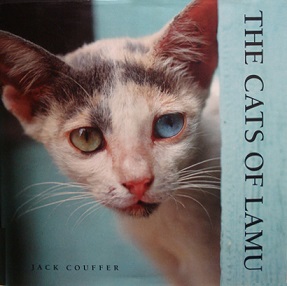
The Cats of Lamu
A touch of foxing.
A beautiful and intriguing photographic exploration of an exotic African island. Four or five thousand years ago, African wild cats were domesticated by the Egyptians. Several hundred years and many cat generations later, the wild animal gradually evolved into the domestic cat as we now know it. Today's many varieties of house-cats differ noticeably from their Egyptian ancestors and the cats of present-day Cairo look the same as cats from anywhere else. But not far from Egypt is an island where a unique group of cats resembles those of the ancients. They are remarkable in their social organization and in their place within a human culture. On the Lamu Archipelago off the coast of Kenya, the cats of the Pharoahs may still survive. The towns and ruins of Lamu were thriving trading centres more than a thousand years ago. Archaeological digs show that these people kept cats and traded with ports in the Red Sea from the very beginning. In Lamu the cats have been genetically isolated by their island environment. Their unique shape - long legs, slim body, whip tail, short hair, long neck, and small head - presents a conformation identical the sacred cats of Egypt...
